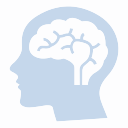World Movement Disorders Day 2024
Movement disorders are neurologic conditions that can be especially difficult to diagnose, treat, and understand.
World Movement Disorders Day is an annual event to raise awareness about movement disorders, taking place every November 29. The global effort is managed by the International Parkinson and Movement Disorder Society and its partners.
What is a movement disorder?
Movement disorders are neurological conditions that affect movement. They can cause either increased movements or decreased or slow movements. These movements may be under the person’s control, known as voluntary, or they may not be under the person’s control, known as involuntary.
Every body movement, from lifting a limb to moving your tongue and talking, involves complex communication between the central nervous system (brain and spinal cord), motor nerves, and skeletal muscles. Any damage to or malfunctions of the areas of the brain that control movement may result in a movement disorder.
There are many types of movement disorders causing different symptoms. Some only affect one area of the body, while others can affect most of the body. Treatments may be available to help manage the symptoms of movement disorders, such as medicines, therapies or surgeries.
Key facts about movement disorders
Movement disorders are neurological conditions that affect bodily motor control, disrupting an individual's life.
These disorders are incredibly varied, including both slowed and involuntary movements. Causes are equally vast, or sometimes entirely unknown.
Movement disorders affect much more than movement. Non-motor symptoms can range from constipation to hallucinations and memory loss.
Treatment is complicated. Most options can only alleviate symptoms and weaken over time, so care requires consistent monitoring and management.
Because they can be challenging both to diagnose and manage, it is important to see a specialist who is trained to identify and treat these disorders.
Prevalence is increasing, outpacing growth estimates. Parkinson's is now the fastest-growing brain disease.
Source: The International Parkinson and Movement Disorder Society®
Movement disorders can be challenging to diagnose, treat, and understand and that is why we are promoting #MoveDisorder awareness!







